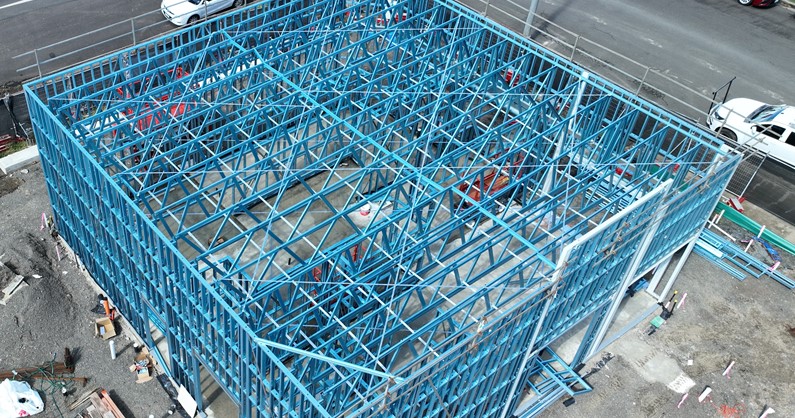Optimizing Efficiency: Streamlining Construction with Steel Framing

Efficiency is a critical aspect of any construction project. From reducing costs and timelines to enhancing productivity and sustainability, optimizing efficiency is key to success. In recent years, steel framing has emerged as a popular choice in construction due to its inherent benefits. In this blog, we will explore how steel framing streamlines construction processes and maximizes efficiency across various aspects of a project.
Prefabrication and Modular Capabilities
Steel framing offers exceptional prefabrication and modular capabilities, revolutionizing construction efficiency. Components such as steel columns, beams, and wall panels can be fabricated off-site in controlled environments. This process enables precise manufacturing, quality control, and faster production, reducing on-site labour requirements and saving valuable time. Prefabricated steel components can be easily transported and swiftly assembled on-site, leading to accelerated project timelines and increased efficiency.
Reduced Construction Time
One of the notable advantages of steel framing is its ability to significantly reduce construction time compared to traditional building methods. The prefabrication process, precise steel connections, and ease of assembly contribute to faster construction cycles. Steel components arrive ready for installation, eliminating the need for time-consuming on-site fabrication. This streamlined process allows for faster project completion, reducing labour costs and enabling earlier occupancy or utilization of the structure.
Design Flexibility and Versatility
Steel framing provides unparalleled design flexibility and versatility, enhancing efficiency throughout the construction process. Its high strength-to-weight ratio allows for longer spans and larger open space, reducing the need for excessive structural supports. The flexibility in design facilitates efficient space planning, optimal layout configurations, and adaptive reuse possibilities. Additionally, steel framing can accommodate future expansions or modifications with ease, providing long-term efficiency and adaptability.
Enhanced Precision and Quality Control
Steel framing benefits from advanced manufacturing processes and stringent quality control measures. Computer-aided design (CAD) and digital modeling tools enable accurate detailing and precise fabrication of steel components. This precision ensures consistent quality and reduces errors during construction. Additionally, steel’s dimensional stability and resistance to warping or shrinking enhance the overall structural integrity of the building, minimizing long-term maintenance requirements and improving efficiency.
Sustainability and Environmental Benefits
Steel framing offers notable sustainability advantages, aligning with the growing demand for environmentally conscious construction practices. Steel is a highly recyclable material, allowing for reduced waste generation and lower environmental impact compared to other construction materials. Additionally, steel-framed buildings can incorporate energy-efficient features such as insulation systems, daylighting, and renewable energy solutions, optimizing energy consumption and reducing environmental footprint.
Structural Performance and Durability
Steel framing ensures robust structural performance and long-term durability. Steel’s inherent strength ad resistance to external factors such as fire, pests, and moisture enhance the lifespan of the building. This durability minimizes maintenance requirements, reducing operational costs and increasing efficiency over the building’s lifetime.
Collaboration and Project Management
Efficiency in construction heavily relies on effective collaboration and streamlined project management. Steel framing’s precise manufacturing and modular nature simplify coordination between architects, engineers, and contractors. The integration of digital tools such as Building Information Modelling (BIM), facilitates seamless communication, clash detection, and efficient planning. This collaborative approach reduces rework, enhances problem-solving, and improves overall project efficiency.
Steel framing is revolutionizing construction by optimizing efficiency at various stages of the building process. Its prefabrication and modular capabilities, reduced construction time, design flexibility, precision, sustainability benefits, structural performance, and collaborative advantages make it a compelling choice for modern projects. By embracing steel framing, construction professionals can streamline processes, reduce costs, save time, and deliver high-quality, sustainable structures that meet the demands of today’s dynamic construction industry.

